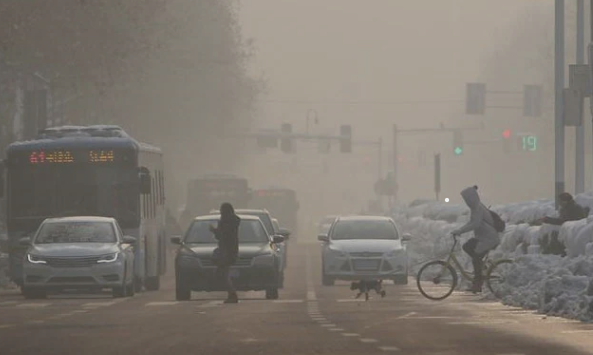China’s air quality took a downturn in 2023, marking the initial instance of degradation in a decade, according to a report released on Friday. The study by the independent research organization, the Centre for Research on Energy and Clean Air (CREA), highlighted that 2023 represents the first year of a year-on-year increase in China’s national average PM2.5 level since the initiation of China’s ‘war on pollution’ in 2013.
PM2.5 particles, if inhaled, pose severe health risks and are associated with premature deaths in individuals with heart or lung diseases. Additionally, they contribute to a range of respiratory and other health issues, as outlined by the US Environmental Protection Agency.

CREA noted that the overall surge in anthropogenic emissions has contributed to the escalation of pollution levels, exacerbated by unfavorable weather conditions.
In a separate study earlier this month, an international consortium of climate scientists projected a four percent increase in fossil fuel CO2 emissions in China for the current year. This rise encompasses higher levels of coal, oil, and gas emissions, marking the country’s ongoing recovery from the Covid-19 lockdowns.
In the past, Chinese cities, including the capital Beijing, were notorious for the dense smog that enveloped residents, particularly during winter. However, since securing the Winter Olympics bid in 2015, China intensified its anti-pollution efforts by shutting down numerous coal plants and relocating heavy industries. While these measures have led to significant improvements, air quality often falls below the standards set by the World Health Organization.

CREA reported on Friday that 80 percent of provincial capitals, including Beijing, registered elevated PM2.5 levels in 2023 compared to the previous year.
The independent research organization, based in Finland, highlighted, “Coal production and thermal power production in areas where the PM2.5 standard was not met have increased by 4.4 percent and 4.3 percent, respectively, on a yearly basis, indicating a greater reliance on fossil energy.”
Utilizing Chinese government data and a machine-learning algorithm capable of distinguishing between the impact of weather and human emissions, CREA based its findings on a comprehensive analysis.

In late October and November, northern China experienced a wave of severe pollution, prompting authorities to caution residents against outdoor activities. During that period, concentrations of hazardous PM2.5 particles in Beijing were more than 20 times higher than the guidelines set by the World Health Organization, as reported by the air quality monitoring firm IQAir.
China, as the world’s largest emitter of greenhouse gases contributing to climate change, particularly carbon dioxide, has raised concerns with a recent surge in approvals for coal-fired power plants. This has fueled apprehensions that China may deviate from its commitment to peak emissions between 2026 and 2030, ultimately striving for carbon neutrality by 2060.
